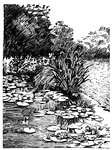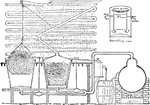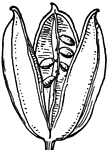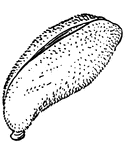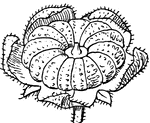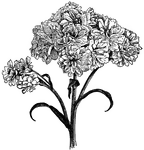
Achillea Ptarmica Variation the Pearl
The Pearl variety of Achillea ptarmica is a full double variety. It is one of the most popular of all…
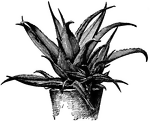
Pot Plant of Aloe
Pictured is a good pot plant of aloe showing the offsets. Aloe plants have a stiff, harsh, and rugged…
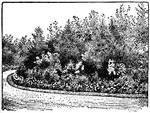
Annual Plants in Landscaping
Pictured are annuals filling the formal space between a drive and a tree group. Annuals are plants that…

Semi-Formal Garden Space
Pictured is a semi-formal garden space of annual flowers. Annuals are plants that bloom in the open…
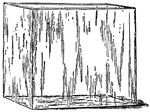
Rectangular Glass Aquarium
An aquarium is a glass tank for live fish, plants, and the like. Pictured is a rectangular glass aquarium.

Lawn Pond of Aquatics
Pictured is a lawn pond of aquatics with a mason-work margin. Aquatics are plants suited to cultivation…

Hardy Chrysanthemum
Pictured is a hardy chrysanthemum. It is one the best of the autumn blooming herbaceous plants.

Hanging Basket
Basket plants are plants which, from their habit of growth and blooming, have been found especially…
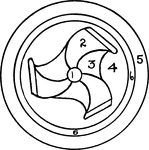
Oriental Pattern Bedding
The numbers represent different plants in this oriental pattern bedding. (1) white geranium, (2) Calendula…

French Pattern Bedding
The number represent different plants in this French pattern bedding. (1) sulphur queen, (2) blue perfection,…

French Border Pattern Bedding
The numbers represent different plants in the French border pattern bedding. (1) marquerite, (2) coleus,…
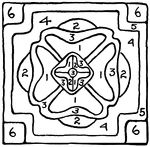
Tudor Rose Pattern Bedding
The numbers represent the different plants in the Tudor rose pattern bedding. (1) scarlet begonia, (2)…

English Border Pattern Bedding
Pictured is an English border pattern from the eighteenth century. The numbers represent different plants.…

Italian Pattern Bedding
Pictured is an Italian pattern of bedding, the numbers representing different plants. (1) orange king,…

Rhipsalis Cassytha
Illustrated are tips of rhipsalis cassytha. Rhipsalis plants have habits similar to mistletoe. It grows…
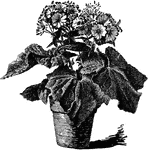
Florists' Cineraria
Illustrated is a small plant of florists' cineraria. The plants run in white and in shades of blue,…

Cypripedium Californicum
Cypripedium californicum plants are either slender or stout. The flowers are small with six to twelve…
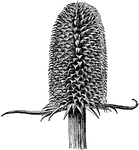
Fuller's Teasel
Fuller's teasel is the common name of dipascus fullonum. The plants are prickly or rough-hairy. The…

Water Table Diagram
Illustrated are diagrams to explain the effect of lowering the water table by means of under draining.…
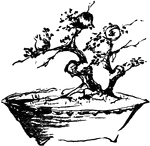
Japanese Dwarf Tree
Dwarf plants are those that never reach the height or size of the usual individuals of the species.…

Scarlet Plume
Scarlet plume is the common name of euphorbia fulgens. The plant is native to Mexico. It is a small…
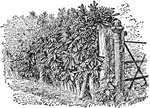
Euphorbia Neriifolia
Illustrated is a euphorbia neriifolia hedge in the west Indies. The plant blooms in June and July.
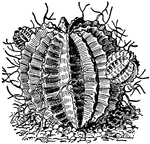
Melon Spurge
Melon spurge is the common name of euphorbia meloformis. It is native to South Africa. It is often mistaken…

Euptelea Polyandra
Euptelea polyandra is native to Japan. The leaves are usually a roundish, egglike shape. The margins…

Crape Myrtle
Crape myrtle is the common name of lagerstroemia indica. It is cultivated in India but probably native…
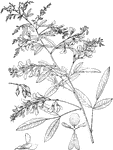
Lespedeza Sieboldii
Lespedeza sieboldii is native to Japan. The flowers bloom in September. The flowers are large and rose…

Greenhouse for Lettuce and Cucumber
Illustrated is a cross section of a greenhouse used for growing lettuce and cucumbers. The slanting…
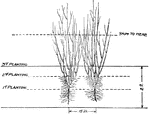
Privet Hedge
Illustrated is a privet hedge at final transplanting. The plants may be set twelve to fifteen inches…
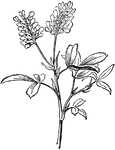
Alfalfa
Alfalfa and lucerne are the common names of medicago sativa. The plant is native to Europe. It is cultivated…

Miscanthus Sinensis
Miscanthus sinensis is a tall, perennial grass. Established plants form clumps as much as eighteen feet…

Herbarium of Willdenow
Pictured are bundles from the Herbarium of Willdenow. The plants are preserved in stout blue paper wrappers.
Five Types of Nepenthes
Pictured are five distinct types of nepenthes, or pitcher plants. From top to bottom: N. villosa, N.…
Old Time Nepenthes
Pictured are three old time nepenthes, or pitcher plants. From top to bottom: N. phyllamphora, N. khasiana,…
Pitcher Plant
Illustrated is an example of how pitcher plants change their shape. The earliest, and best, are mug…

Apple Tree Nursery
Pictured is a view of an American apple tree nursery. In horticulture a nursery is an establishment…
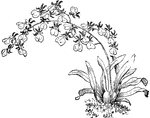
Oncidium Tigrinum
Oncidium tigrinum blooms in winter and is native to Mexico. The flowers are a rich, reddish brown with…

Approach Grafting
Inarching, also known as approach grafting, is used to join two plants that are otherwise very difficult…

Cabbage Plant
Various cabbage plants drawn on the same scale. Upper left: Brussels sprouts, lower left: cabbage, upper…
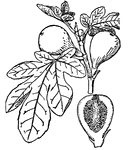
Fig
Any plant belonging to the genus Ficus is a fig. They are widely distributed in warm climates. Some…

Fritillary (F. meleagris)
Fritillary is a genus of liliaceous plants, characterized by bearing solitary flowers, each with six…
